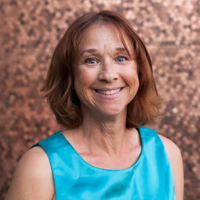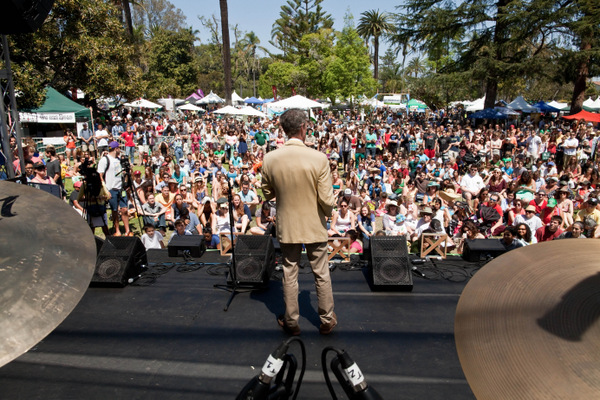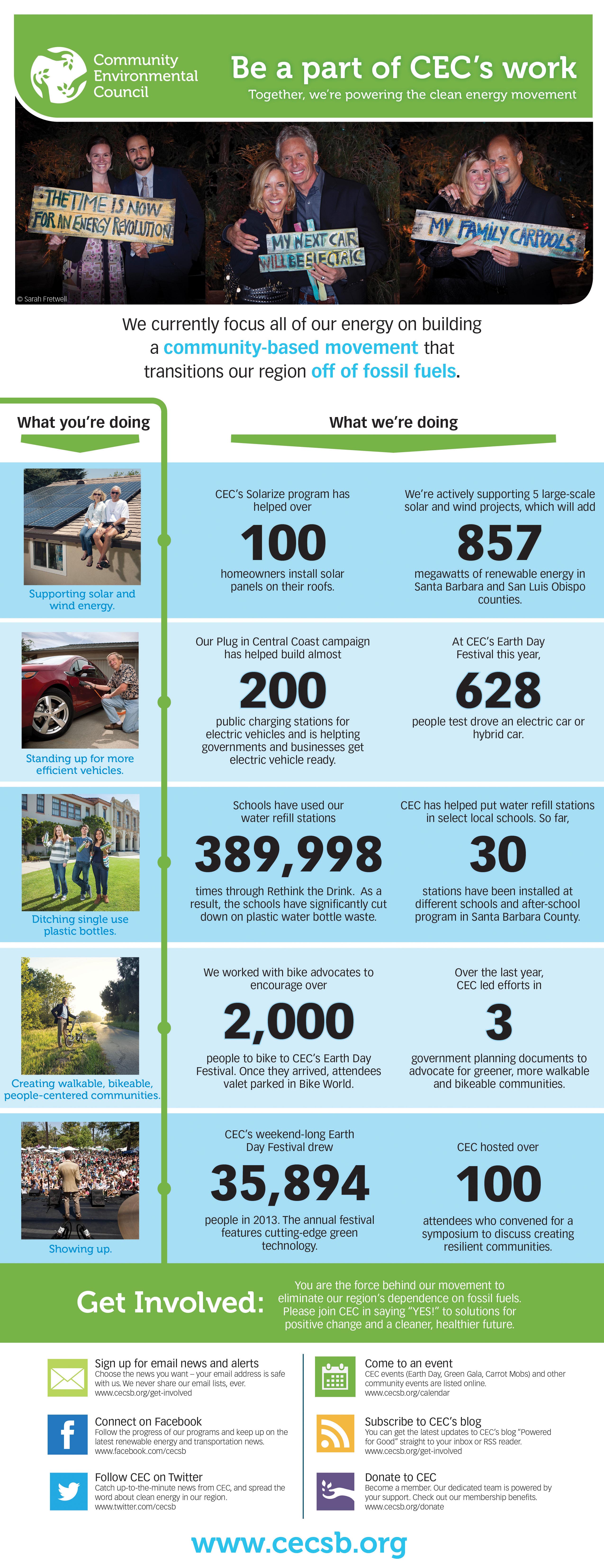Share This
Related Posts
Tags
Community Environmental Council
By Erica Rascón on Apr 17, 2014 in Giving, People
You know those people with the electric car, the one that’s charged by the solar panels on the roof of their net-zero, LEED Platinum house? The people that only eat organic produce that’s delivered by bike from the local co-op?
The Community Environmental Council knows that you’re probably not one of them.
Whether you’re striving to be greener or you just like to do a solid for Mother Earth now and then, the Community Environment Council (CEC) is your advocate. The organization specializes in “real life solutions for environmental problems.” This is accomplished largely by meeting people where they are mentally and financially and then working from there.
“Our overall mission can be difficult to digest but we’re trying to make the pieces of our mission more tangible, palatable, more understandable,” begins Kathi King, Donor Relations Manager. “That’s why we’ve created a menu of choices so people can pick and choose what part of our mission appeals to them the most.”
The CEC has divided its mission into five components: reducing the use of plastics, nixing carbon emissions, increasing solar power production, eating local, and minimizing fossil fuel usage. On the website, users can find practical resources on how to make optimal impact in each area.
The organization has applied the divide-and-conquer rule to its internal operations as well. Fossil Free by ’33 has become the master campaign, receiving the majority of the staff’s focus. In short, CEC would like to see the region weaned off of fossil fuels in one generation’s time. It plans to do so in a way that creates jobs, saves money, and strengthens the economy. It’s the sort of big picture goal that most people have a hard time conceptualizing.
Kathi and the staff maintain  realistic expectations. “We will never get 100 percent away from some usage of fossil fuels, be it natural gas or oil in some way or another,” says Kathi. “But we’re moving towards a net zero approach, where we are exporting wind power or solar power so that our energy usage equals out to zero, hopefully by 2033.”
realistic expectations. “We will never get 100 percent away from some usage of fossil fuels, be it natural gas or oil in some way or another,” says Kathi. “But we’re moving towards a net zero approach, where we are exporting wind power or solar power so that our energy usage equals out to zero, hopefully by 2033.”
Fossil Free by ’33 requires a broad reach of collaborative efforts. CEC is pushing for large-scale utility solar projects that can feed into the grid, making the grid more renewable. “Driving on sunshine” is another big factor, promoting the use of electric vehicles that are charged by solar power. Lastly, creating a community that’s more focused on biking, walking, and local food ties the vision into a pretty bow. (If you’re wondering, local food is important because it minimizes the need for fuel-guzzling food shipments and vast, petro-chemical reliant monoculture.)
With enough people on board, a net-zero Santa Barbara lies within the realm of feasibility. Once one city shows that it can be done, the model—complete with best practices gleaned from trial and error—can be duplicated and customized throughout the world. That’s the ultimate goal, the ultimate way that CEC wants to make a lasting impression.
“We are small enough to make big changes but we’re also big enough to make a difference” Kathi says. “We can outsource what we’ve learned. It’s on our wish list to create a model that can be replicated in other places.”
It all starts with you. Visit the website, see what sustainability effort speaks to you, and start doing your part today! Learn more about the CEC and other environmentally focused organizations and businesses at the annual Earth Day Festival, April 26-27, 2014 at Alameda Park.

